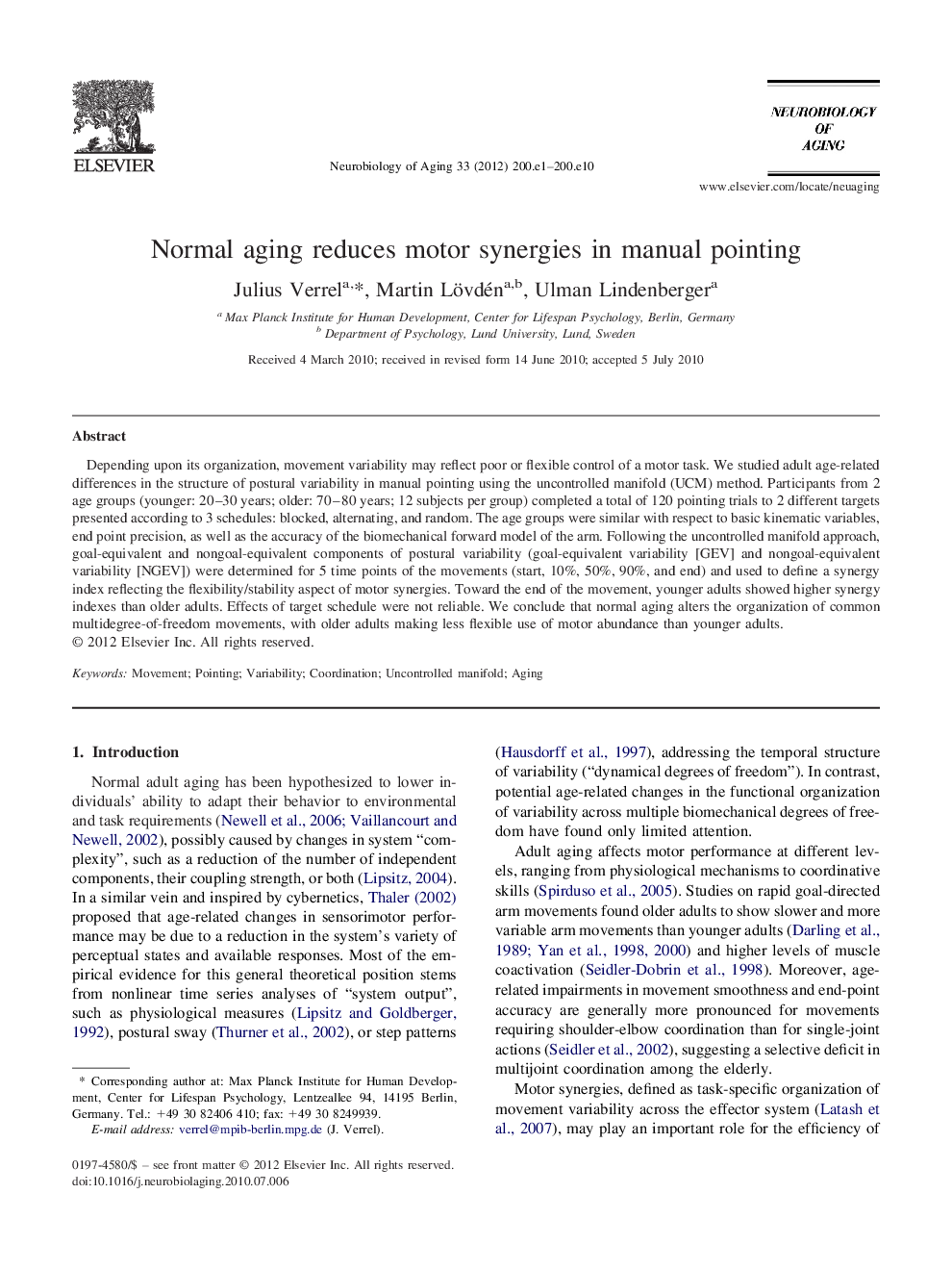| Article ID | Journal | Published Year | Pages | File Type |
|---|---|---|---|---|
| 6810111 | Neurobiology of Aging | 2012 | 10 Pages |
Abstract
Depending upon its organization, movement variability may reflect poor or flexible control of a motor task. We studied adult age-related differences in the structure of postural variability in manual pointing using the uncontrolled manifold (UCM) method. Participants from 2 age groups (younger: 20-30 years; older: 70-80 years; 12 subjects per group) completed a total of 120 pointing trials to 2 different targets presented according to 3 schedules: blocked, alternating, and random. The age groups were similar with respect to basic kinematic variables, end point precision, as well as the accuracy of the biomechanical forward model of the arm. Following the uncontrolled manifold approach, goal-equivalent and nongoal-equivalent components of postural variability (goal-equivalent variability [GEV] and nongoal-equivalent variability [NGEV]) were determined for 5 time points of the movements (start, 10%, 50%, 90%, and end) and used to define a synergy index reflecting the flexibility/stability aspect of motor synergies. Toward the end of the movement, younger adults showed higher synergy indexes than older adults. Effects of target schedule were not reliable. We conclude that normal aging alters the organization of common multidegree-of-freedom movements, with older adults making less flexible use of motor abundance than younger adults.
Related Topics
Life Sciences
Biochemistry, Genetics and Molecular Biology
Ageing
Authors
Julius Verrel, Martin Lövdén, Ulman Lindenberger,
